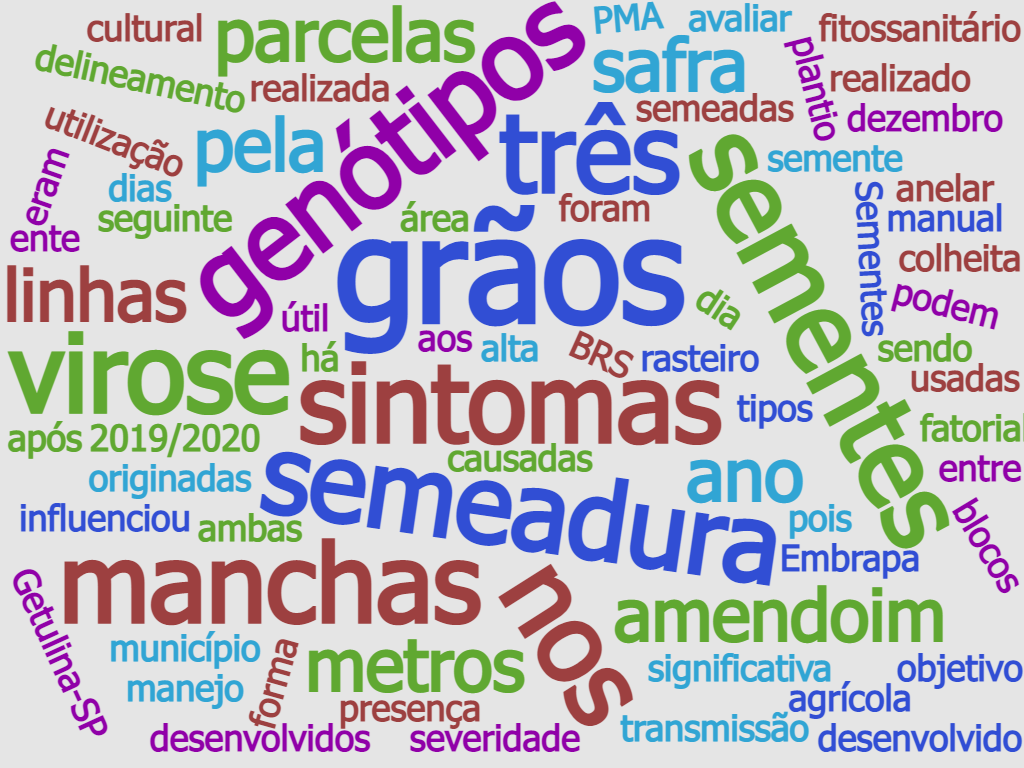Effect of seed selection on kernel quality of peanut produced under spotted wilt epidemics
DOI:
https://doi.org/10.52755/sas.v2iedesp1.147Keywords:
Arachis hypogaea L., Breeding Program, OrthotospovirusAbstract
This work aimed to evaluate the symptoms of spotted wilt in peanut seeds of different genotypes, cultivated with seeds with or without symptoms of spotted wilt. The experiment was carried out in the agricultural year 2020/21 with manual sowing on December 17, 2020, in the city of Getulina-SP. Good agricultural practices of the experimental area were done according to agronomic orientation, commercial standard. The plots were formed by two lines three meters long, spaced by 0.90 m, 3.0 m between plots. The experimental design was in randomized blocks, with three replications, in a 5 x 2 factorial scheme, with five genotypes (BRS 423 OL, 2091 OL, 2133 OL, 2250 OL and 2101 OL) and 2 types of seeds (with spotted wilt
symptoms or without symptoms), identified as normal or damaged seeds, both collected in an area with "‹"‹spotted wilt epidemis in the previous year (2019/2020). All genotypes were developed by the PMA from Embrapa. Harvest was performed 130 days after sowing. The use of seeds of with or without symptoms did not significantly influenced virus symptoms in the grains produced in the following year. There was no difference among the genotypes for symptoms in the seeds. Seeds with symptoms of spotted wilt can be used for sowing, as there was no difference in the plant standard; the virus is also not transmisted by the seed.
Downloads

Downloads
Published
How to Cite
Issue
Section
License
Copyright (c) 2021 Jair Heuert, Marcel Rodrigo Bazanella, Maxuel Fellipe Nunes Xavier, Taís de Moraes Falleiro Suassuna

This work is licensed under a Creative Commons Attribution-NonCommercial-ShareAlike 4.0 International License.
Autores concordam com os seguintes termos:
a) Os autores mantêm os direitos autorais e concedem à revista o direito de primeira publicação, com o trabalho simultaneamente licenciado sob a LicençaAttribution-NonCommercial-ShareAlike 4.0 International, que permite o compartilhamento do trabalho com reconhecimento da autoria e publicação inicial na Revista SAS. A licença permite o uso, a distribuição e a reprodução irrestrita, em qualquer meio, desde que devidamente citada a fonte. Essa licença permite também que outros remixem, adaptem e criem a partir do seu trabalho para fins não comerciais, desde que atribuam a você o devido crédito e que licenciem as novas criações sob termos idênticos.
b) Não cabe aos autores compensação financeira a qualquer título, por artigos ou resenhas publicados na South American Sciences.
c) Os conceitos expressos nos artigos publicados na South American Sciences são de inteira responsabilidade de seus autores.








